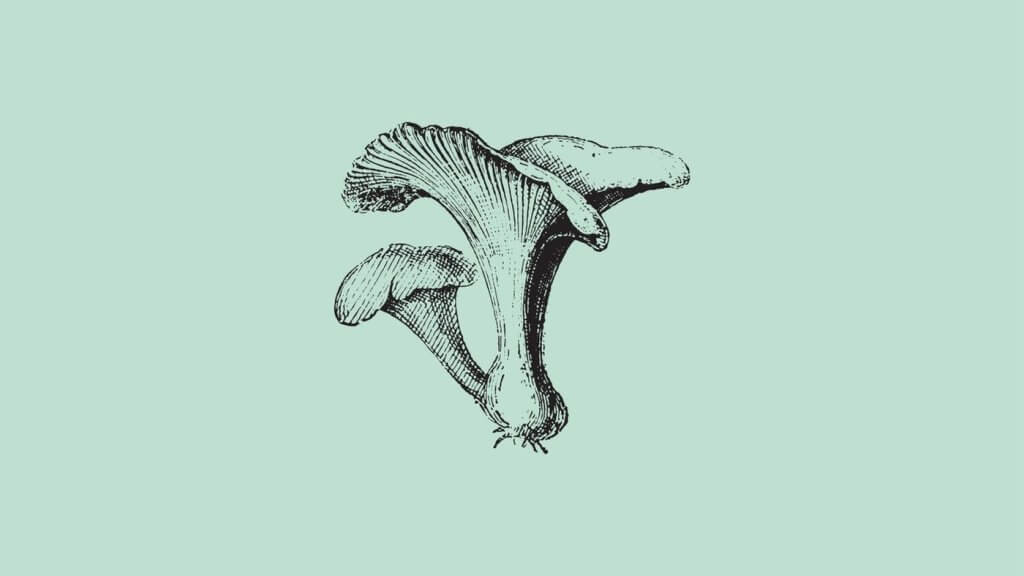Due to its specific growing conditions, C. cibarius (common name: golden chanterelle) is one of the most challenging mushrooms to cultivate. For this reason, this golden chanterelle mushroom is highly sought after and only seasonally available.
Cantharellus cibarius Phylum and Taxonomy
From the Basidiomycota phylum, Agaricomycetes class, Cantharellales order, and the Cantharellaceae family, the Cantharellus cibarius is a uniquely delicious mushroom. This species is known as girolle in Europe.
Before mycologists placed it in the genus Cantharellus, this mushroom was described as Agaricus cantharellus. Since 1821, there have been many synonyms, but the mushroom has stayed in the same genus.
This exact species is only found in Europe. In the past, mycologists thought that all golden chanterelles were C. cibarius.
What Are You Foraging For Right Now?
We're thrilled to hear your ideas. What would you like to submit today? Feel free to share your thoughts and experiences with us.
However, in 1997, due to minor differences, the most common species of golden chanterelles in North America was described as Cantharellus formosus (found primarily in Oregon and Washington).
Watch our video on when and where to look for chanterelle mushrooms.
How to Identify Cantharellus cibarius?
Cantharellus cibarius is known for its distinctive appearance, vibrant color, and unique flavor.
Here’s how to identify Cantharellus cibarius:
Color and Shape: Chanterelles have a distinctive funnel or trumpet-like shape. Their cap is wavy and often irregular, with a distinct “ridged” appearance that is not found in many other mushrooms.
The color can range from pale yellow to deep golden or even orange.
Gills and Ridges: Chanterelles have a unique feature that sets them apart from most other mushrooms: they lack true gills.
Instead, they have shallow, blunt-edged ridges that run down the stem and extend onto the cap. These ridges are forked and run irregularly, almost like a network.
Stem: The stem of a chanterelle is typically firm, pale in color, and often somewhat thickened at the base. It should match the color of the rest of the mushroom.
Smell: Chanterelles often have a mild, fruity, and slightly peppery aroma. This can help distinguish them from other mushrooms, although it might not be a foolproof method.
Spore Print: While not always necessary for identifying chanterelles, obtaining a spore print can provide an extra layer of confirmation. To do this, place the cap gill-side down on a piece of white paper and cover it with a bowl or container overnight.
The spore print of a golden chanterelle is typically white to pale cream in color.
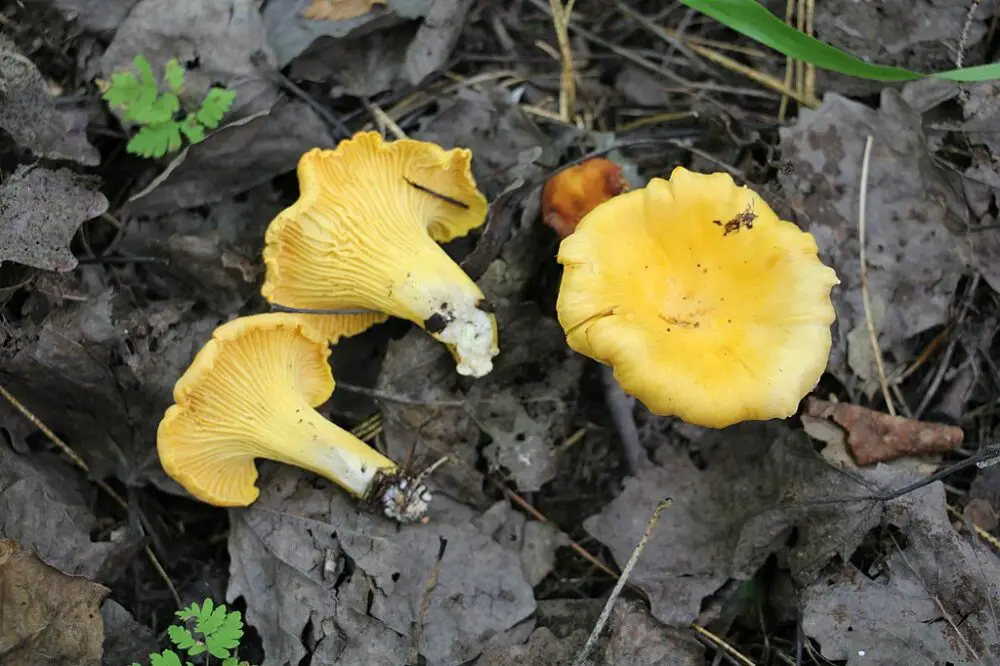
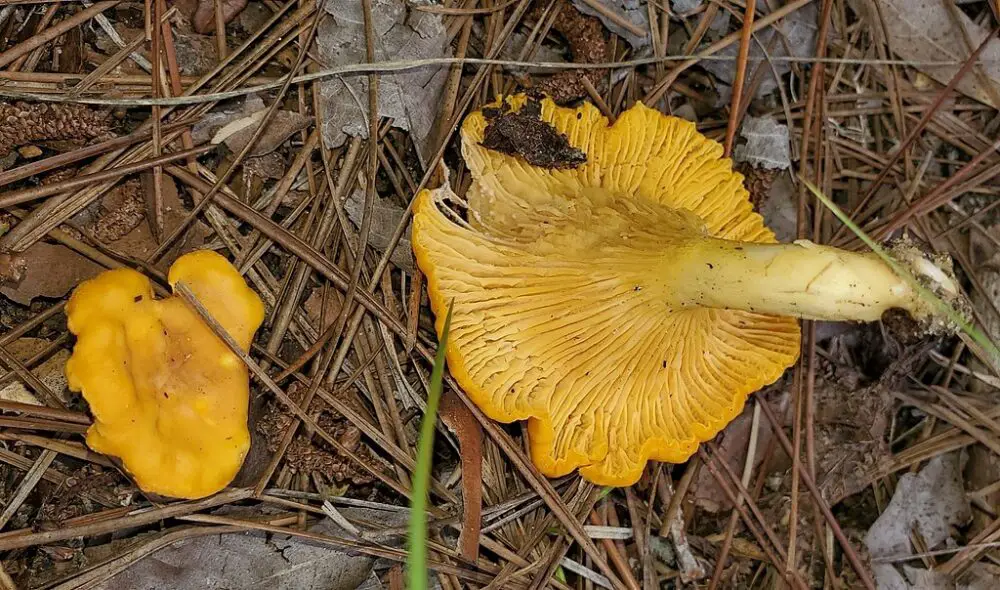
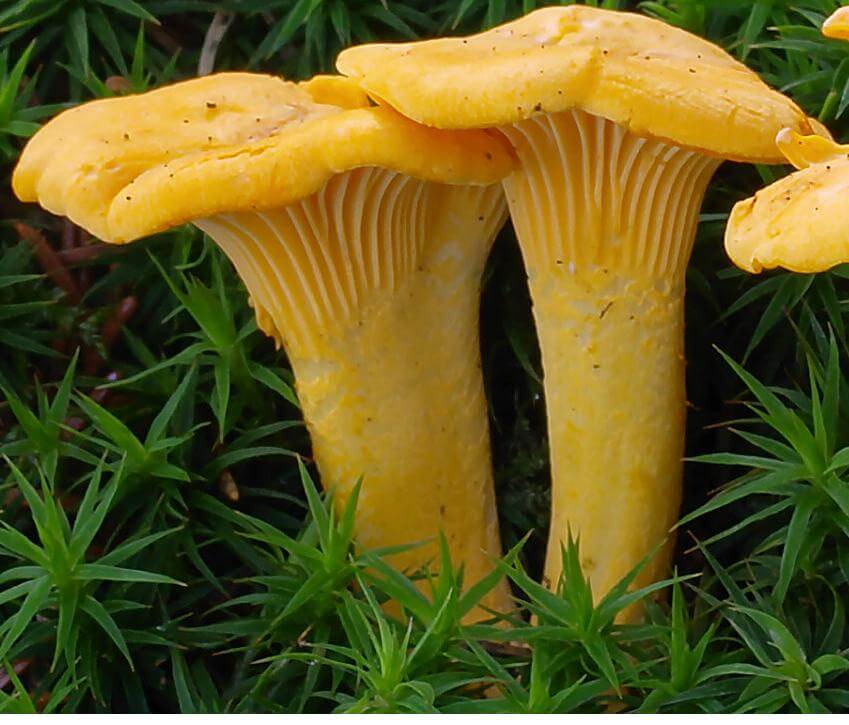
To gain confidence in identifying golden chanterelles, use reputable field guides, mushroom identification books, or online resources specific to your region.
Where are Cantharellus cibarius found?
They can be found in deciduous and coniferous forests, often growing near oak, pine, fir, and other trees.
When looking for golden chanterelles, keep in mind the following habitat preferences:
- These mushrooms tend to grow in well-drained soil, often in areas with a good mix of sunlight and shade.
- Look for them near the base of trees, among leaf litter, and in mossy areas.
- They can appear in late spring through early fall, depending on local climate conditions.
Here are some general areas where you might have good chances of foraging for golden chanterelles:
- Pacific Northwest (Oregon, Washington): The Pacific Northwest is known for its abundant chanterelle populations. Look for them in both coniferous and mixed forests, often near Douglas fir, Western red cedar, and other tree species.
- Northern California: Northern California’s coastal forests and woodlands, including areas like the Mendocino National Forest, can be productive for finding golden chanterelles.
- Rocky Mountains (Colorado, Montana): In higher elevations of the Rocky Mountains, you might find golden chanterelles growing in association with spruce, fir, and pine trees.
- Northeast (New England States): The forests of the northeastern United States, including states like Vermont, New Hampshire, and Maine, can also yield golden chanterelles. Look for them in mixed hardwood and coniferous forests.
- Appalachian Mountains: Parts of the Appalachian Mountains, stretching from Georgia to Maine, offer suitable habitats for golden chanterelles. Look for them in oak, beech, and hemlock forests.
- Michigan and the Great Lakes Region: Forests around the Great Lakes, including those in Michigan, can provide opportunities to find golden chanterelles.
- Southeastern States: While less common, golden chanterelles have been reported in the southeastern United States, including states like North Carolina and Tennessee. Look for them in moist, shaded areas.
How Does The golden Chanterelle Differ From Other Chanterelle Mushrooms?
Chanterelle mushrooms belong to the genus Cantharellus, and within this genus, there are various species of chanterelles. While they share some common characteristics, there are also differences among different chanterelle species.
Here’s a comparison between the golden chanterelle and a few other notable chanterelle species:
| Attributes | Golden Chanterelle (C.cibarius) | Smooth Chanterelle (C.lateritius) | Cinnabar Chanterelle (C.cinnabarinus) | Black Trumpet Chanterelle (Craterellus cornucopioides) |
| COLOR | golden to yellow-orange | paler orange or brownish | bright orange-red to reddish-brown | blackish-brown to grayish-brown |
| CAP SHAPE | funnel or trumpet-shaped with wavy and irregular edges | funnel or trumpet shape with smoother, less wavy edges | funnel-shaped with wavy edges | trumpet or funnel-shaped, but with thinner, more delicate edges |
| RIDGES & GILLS | irregular, forked ridges on the underside; true gills are absent | forked ridges on the cap; gills absent | forked ridges on the cap; gills absent | smooth surface, no true gills or ridges |
| WHERE TO FIND THEM | deciduous and coniferous forests | hardwood forests, including oak and beech forests | coniferous and mixed forests, often associated with pine trees | near hardwood trees and in damp, mossy areas |
| GEOGRAPHIC RANGE | North America and Europe | Eastern United States | Western North America | North America and Europe |
| SPORE PRINT | white to pale cream | white to pale cream | white to pale cream | whitish to pale cream |
| SMELL | fruity, slightly peppery aroma | mild, fruity aroma | fruity, apricot-like aroma | fragrant, earthy aroma |
| EDIBILITY | edible | edible | edible | edible |
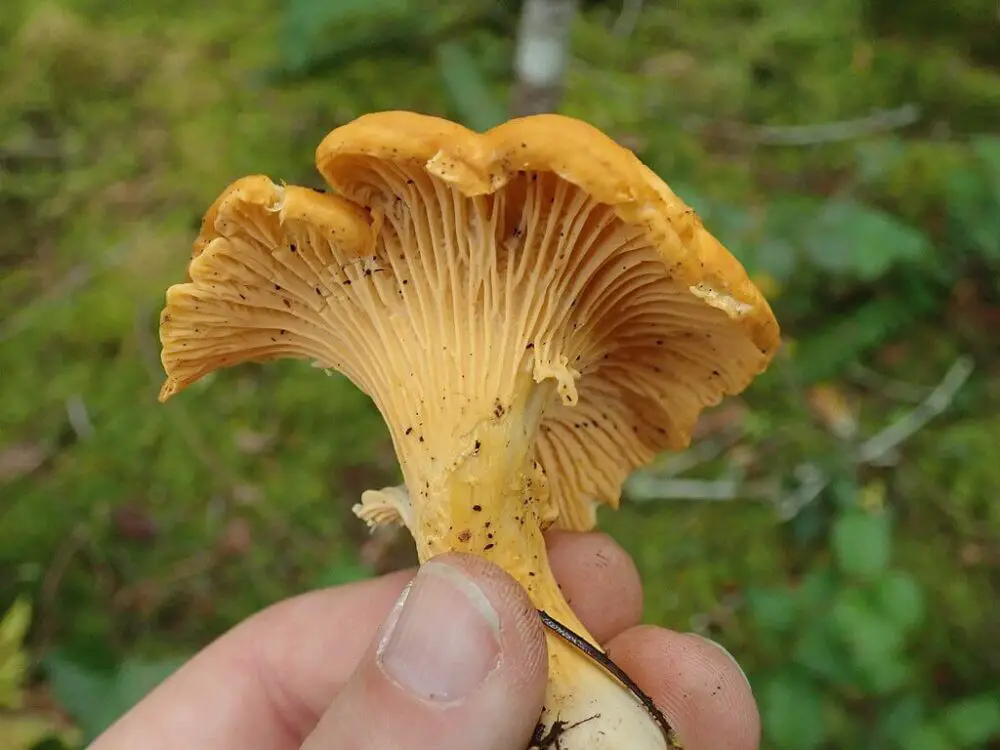
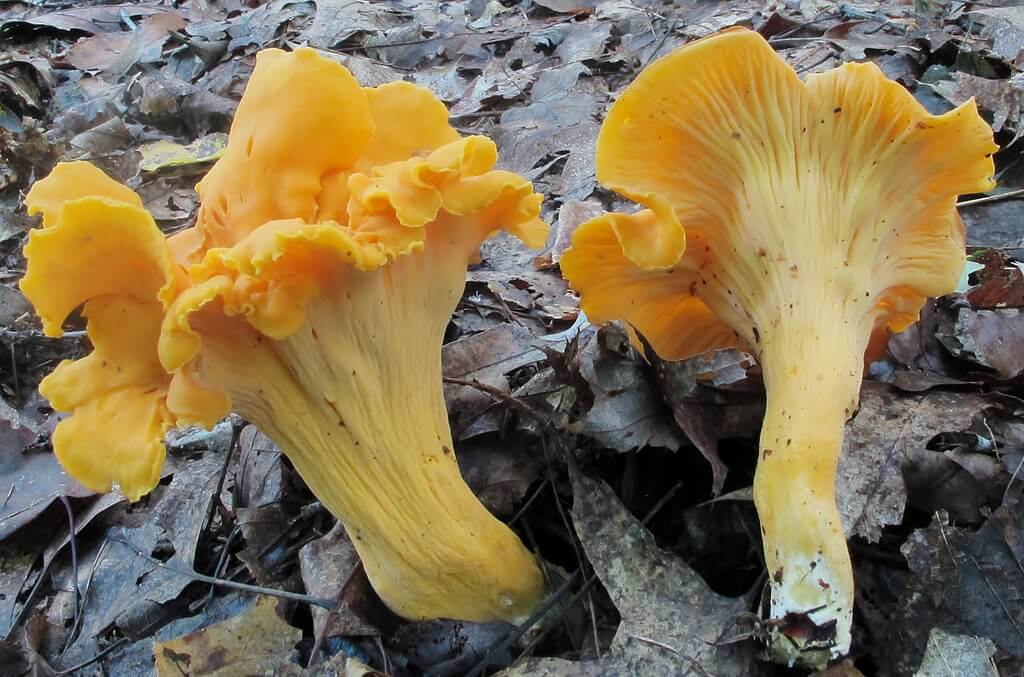
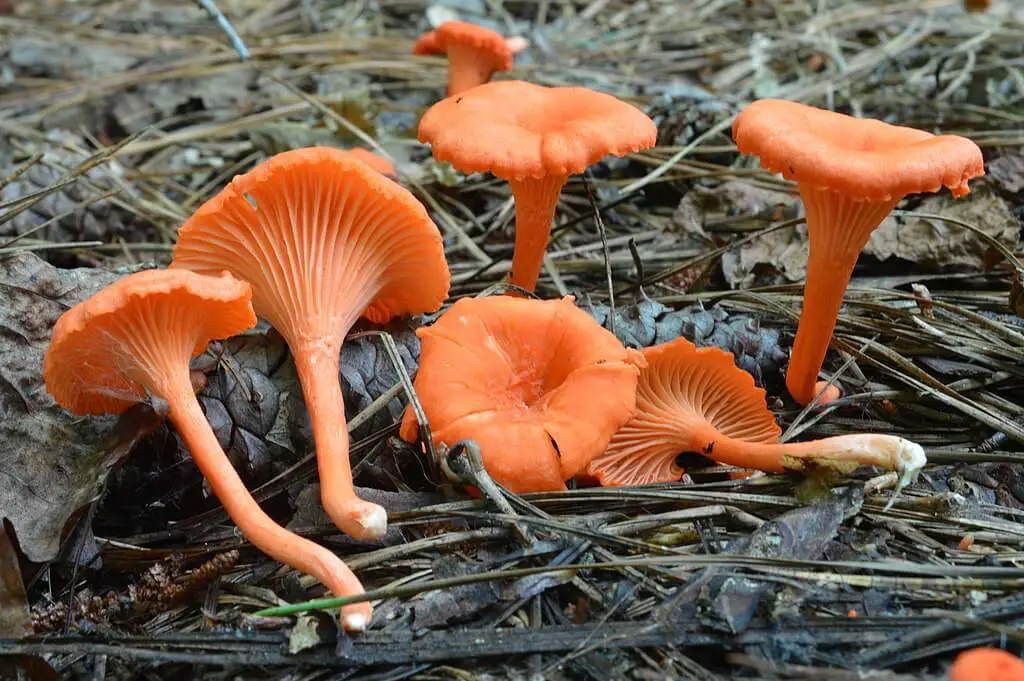
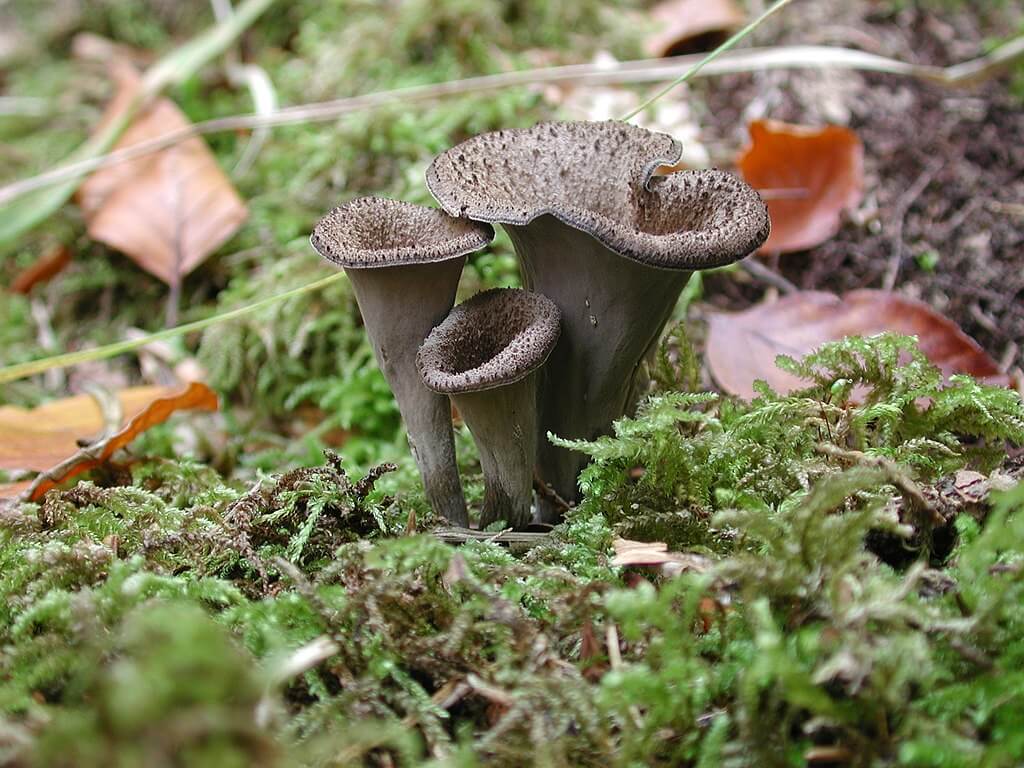
Can you eat Cantharellus cibarius?
Yes, Cantharellus cibarius, also known as the golden chanterelle, is edible and highly regarded by many for its delicious flavor and culinary versatility.
It is considered one of the most sought-after wild mushrooms for cooking due to its unique taste and texture.
Are There Any Poisonous Cantharellus cibarius Look-alikes?
There are several look-alike species that can be mistaken for Cantharellus cibarius. While the golden chanterelle is generally considered edible and safe to eat, misidentification can have serious health consequences.
Here are a few common poisonous or potentially toxic look-alike mushrooms to be cautious of:
False Chanterelle (Hygrophoropsis aurantiaca)
This is one of the most well-known look-alikes. The false chanterelle has a similar appearance to the golden chanterelle, but there are important differences:
- The false chanterelle’s gills are not forked and are more like true gills.
- The color is often more orange than golden, and the cap surface can be smoother.
- The stem of the false chanterelle tends to be more fibrous and not as thick as that of the true chanterelle.
- It lacks the distinctive peppery aroma of the golden chanterelle.
Jack-o’ Lantern Mushroom (Omphalotus olearius) and Eastern Jack-o’ Lantern Mushroom (Omphalotus illudens)
The jack-o’ lantern mushroom is larger than the golden chanterelle and has gills that run down the stem. It is bioluminescent and emits a faint glow in the dark.
- The gills of the jack-o’ lantern mushroom are thin and widely spaced.
- The color is often brighter orange and more uniform than that of the golden chanterelle.
- The jack-o’-lantern mushroom is toxic and should never be consumed.
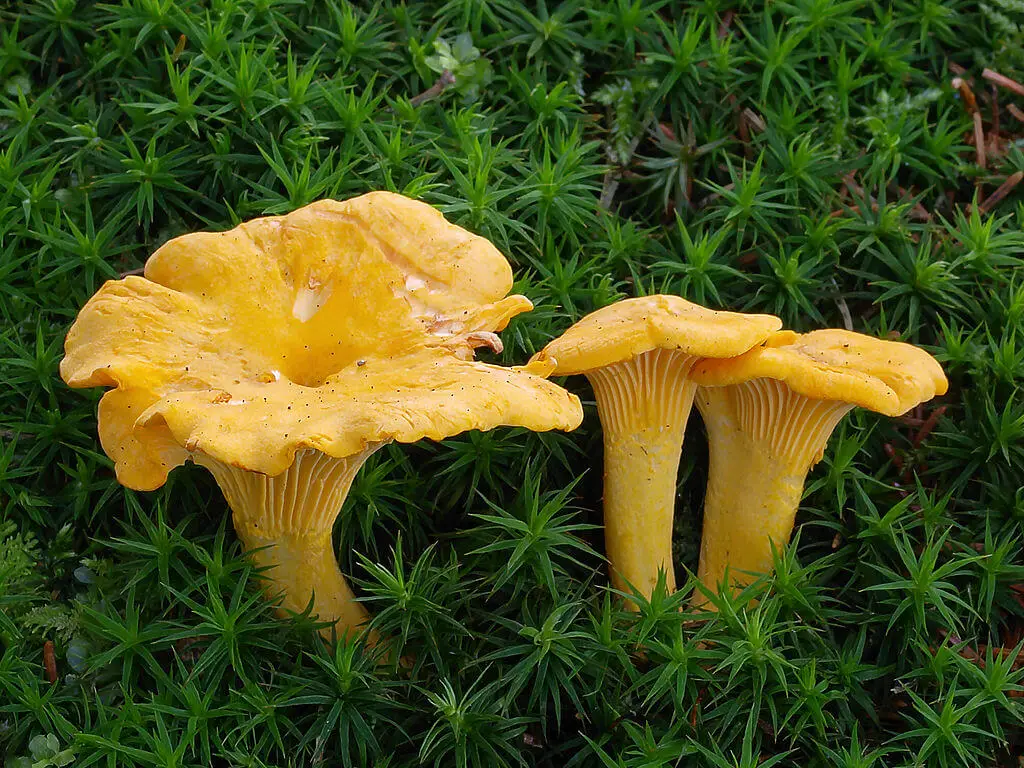
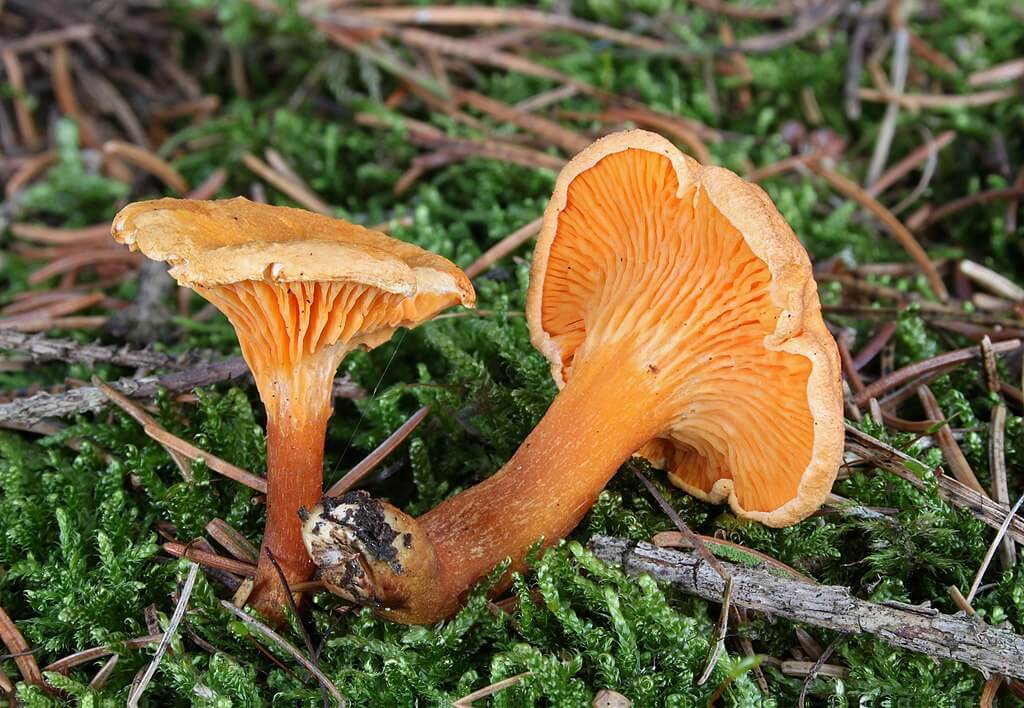
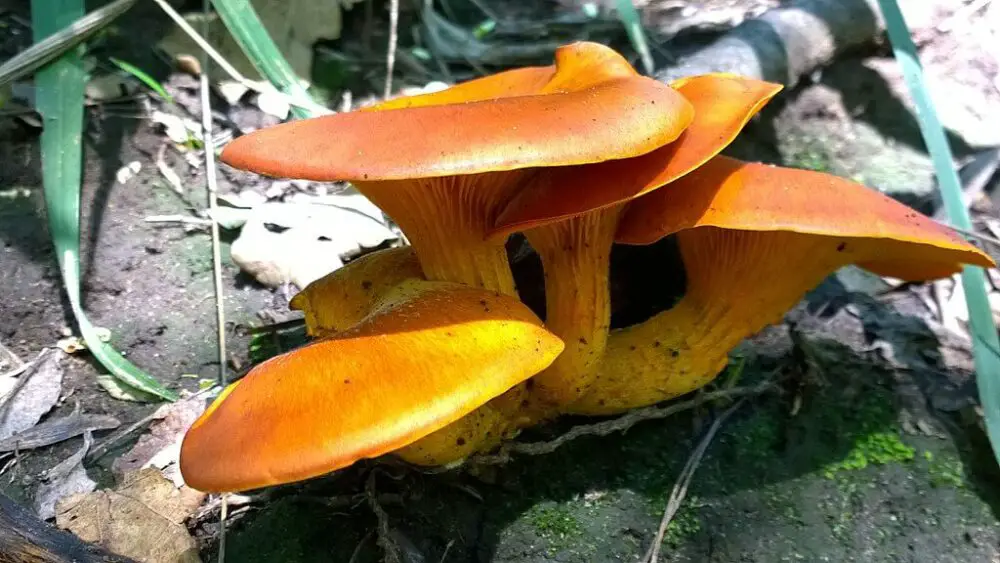
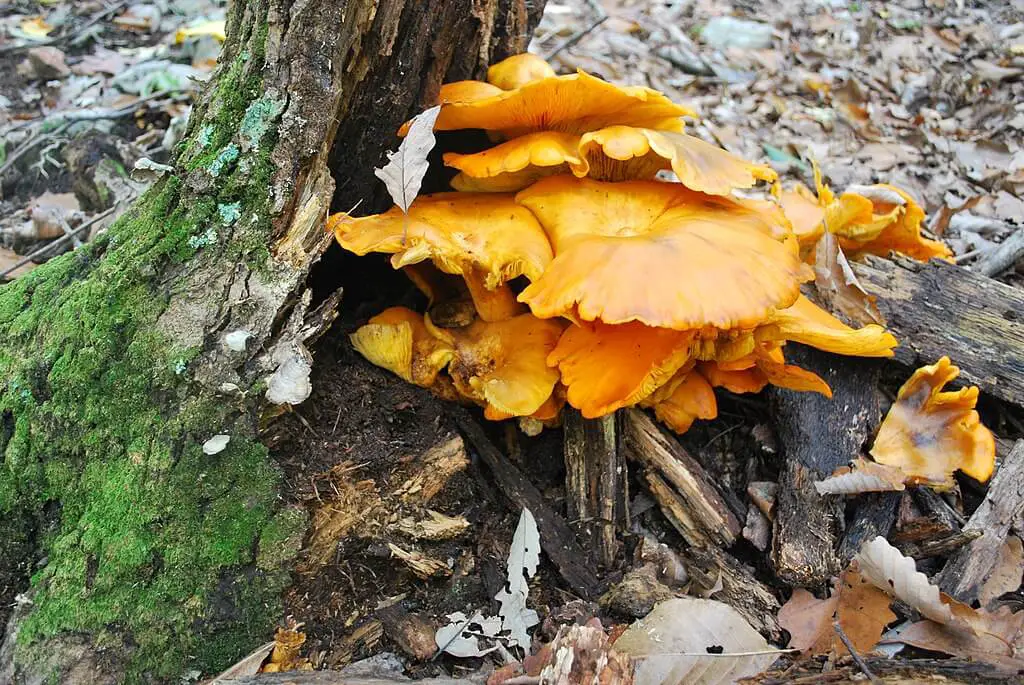
Golden Chanterelle: How To prepare it & Recipes
This edible mushroom is delicious enough to eat on its own, sauteed in butter, or used in a sauce. Make sure not to use it in a dish with other overpowering flavors. Otherwise, the fruitiness of the mushroom will be lost.
Here are some popular and tasty ways to prepare golden chanterelles:
- Sautéed Golden Chanterelles: Sautéing chanterelles is a simple and classic way to highlight their flavor. Heat butter or oil in a pan, add cleaned and sliced chanterelles, and cook until they release their moisture and become golden brown. Season with salt, pepper, and fresh herbs like thyme or parsley.
- Creamy Chanterelle Risotto: Add a luxurious touch to a creamy risotto by incorporating sautéed golden chanterelles. The mushrooms can be cooked along with the risotto rice, and finished with Parmesan cheese and a drizzle of truffle oil for extra richness.
- Chanterelle Pasta: Toss cooked chanterelles with your favorite pasta, garlic, shallots, and a splash of white wine. Finish with a bit of cream or butter, grated cheese, and fresh herbs. This dish offers a delightful combination of flavors and textures.
- Chanterelle Soup: Create a hearty and comforting soup by simmering golden chanterelles with aromatics like onions, leeks, and garlic. Blend the mixture with vegetable or chicken broth and finish with a touch of cream or crème fraîche. Garnish with fresh herbs.
- Chanterelle Quiche: Incorporate sautéed chanterelles into a savory quiche filling along with eggs, cheese, and cream. The earthy flavor of the mushrooms pairs well with the custardy texture of the quiche.
- Chanterelle and Gruyère Tart: Make a savory tart by filling a pre-baked crust with a mixture of sautéed chanterelles, caramelized onions, grated Gruyère cheese, and a custard-like mixture of eggs and cream. Bake until golden and set.
- Chanterelle Crostini: Top toasted baguette slices with a mixture of sautéed chanterelles, garlic, shallots, and fresh thyme. Drizzle with a balsamic reduction or truffle oil for added depth of flavor.
- Grilled Chanterelles: Brush whole or halved chanterelles with olive oil, garlic, and herbs, then grill them until they develop a nice char. Grilling enhances their smoky and earthy flavors.
- Chanterelle and Goat Cheese Omelette: Fold sautéed chanterelles and creamy goat cheese into a fluffy omelette for a decadent and satisfying breakfast or brunch.
- Chanterelle Pizza: Top your favorite pizza dough with a mixture of sautéed chanterelles, caramelized onions, mozzarella cheese, and fresh arugula or microgreens after baking.
You can preserve golden mushrooms by freezing them or pickling them. Drying them out in an oven is not recommended. They often lose their unique flavor and come out bitter.
What to read next: A Forager’s Guide to Agaricus Arvensis (Horse Mushroom)
Originally from Florida, but with a lust for travel, Sami has found herself in many remote areas with little-to-no access to traditional medicines. Since 2014, she has been experimenting with natural remedies, eastern medicine, and foraging. She believes that the Earth provides us with everything we need to live, heal, and cure.

